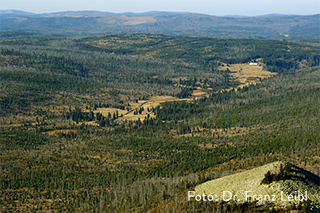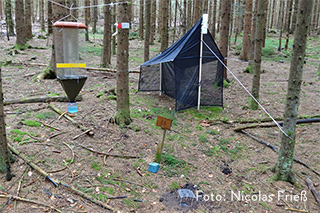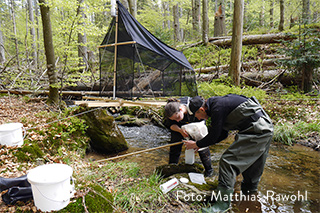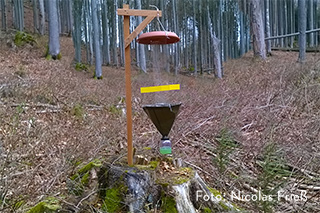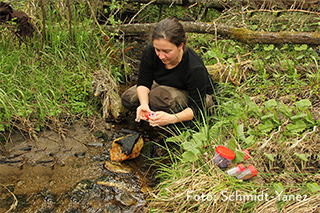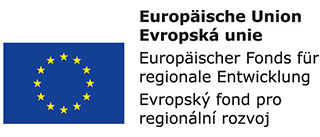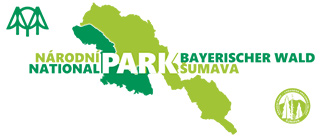Silva Gabreta Monitoring – Realisation of a cross-border biodiversity and water balance monitoring program
Motivation:
In order to understand rapid changes in global biodiversity it is necessary to analyze the prevailing condition of ecosystems, and thereby clarify relationships between species and their environments. This project aims to establish a long term monitoring program for the observation and investigation of biodiversity and climate. In addition to an altitudinal gradient of about 800m, the Bavarian Forest National Park also is characterized by a large gradient of forest structure. This is the result of the remaining ancient tree stands and the action of bark beetles in the last two decades who are responsible for, sometimes, very high dead wood stocks. These gradients cover a broad spectrum of abiotic factors and forest stand structures which makes the national park an excellent study area in biodiversity research.
Project aims::
The planned project offers firstly the opportunity to establish a cooperative cross border biodiversity monitoring program. This lays the foundation for standardized long term monitoring and certifies the national parks, Bavarian Forest and Šumava, as transboundary. Establishing the infrastructure required for the cross border monitoring network will allow the biodiversity of forests, moors and waterbodies to be quantified seamlessly across both national parks using modern and standardized methodologies. Furthermore, this project enables an intensive nature conservancy and scientific exchange, and collaborative data analysis using the shared biodiversity database. The national parks intend to use the findings in developing, and ultimately applying, recommendations for cross border nature conservation management. This will foster the natural development of the transboundary natural environment.
Study design:
In 2006 and 2016, species communities were cataloged in four transects, covering the forests’ complete altitudinal and structural gradients. This included recording vascular plants, mosses, lichen and fungi, various insect groups such as beetles, bugs and moths, as well as spiders, snails, birds, bats and larger vertebrates. Different trap types were therefore deployed: floor traps, flight interception traps and malaise traps. Floor traps and flight interception traps, which respectively are particularly suited to collecting beetles, spiders and snails, and flies and wasps, were placed at all 157 study plots. Malaise traps are capable of capturing many different insect groups, and were placed additionally at 52 of the 157 plots. The species communities of mountain streams were cataloged along the main tributaries in 2016 and 2018. 53 sampling locations from 700 to 1100m altitude were established. Aside from fauna and flora, at these locations the temperature will be continuously recorded using in-situ data loggers. Furthermore, near natural and re-naturalized moors were selected at different altitudinal levels in order to study the effect of climate change on the water balance. At these nine locations the water level, hydrochemistry and moor vegetation will be recorded.
Funding:
Interreg V objective 3 – EU funds
Contacts person::
Dr. Linda Seifert
Project coordinator
Linda.Seifert@npv-bw.bayern.de
Kooperationspartner:
- Šumava National Park
- Senckenberg Nature Research Society
- Masaryk University
- Charles University Prague
Publications:
- Bässler, C., Müller, J., 2010. Importance of natural disturbance for recovery of the rare polypore Antrodiella citrinella Niemelä & Ryvarden. Fungal Biology 114, 129-133.
- Bässler, C., Müller, J., Dziock, F., Brandl, R., 2010b. Effects of resource availability and climate on the diversity of wood-decaying fungi. Journal of Ecology 98, 822-832.
- Bässler, C., Förster, B., Moning, C., Müller, J., 2008. The BIOKLIM Project: Biodiversity research between climate change and wilding in a temperate montane forest – The conceptual framework. Waldökologie 7, 21-33.
- Bässler, C., Seifert, L., Müller, M., 2015. The BIOKLIM Project in the National Park Bavarian Forest: Lessons from a biodiversity survey. Silva Gabreta 21, 81-93.
- Müller, J., Reed, N., Bussler, H., Brandl, R., 2010a. Learning from a "benign neglect strategy" in a national park: Response of saproxylic beetles to dead wood accumulation. Biological Conservation 143, 2559-2569.

